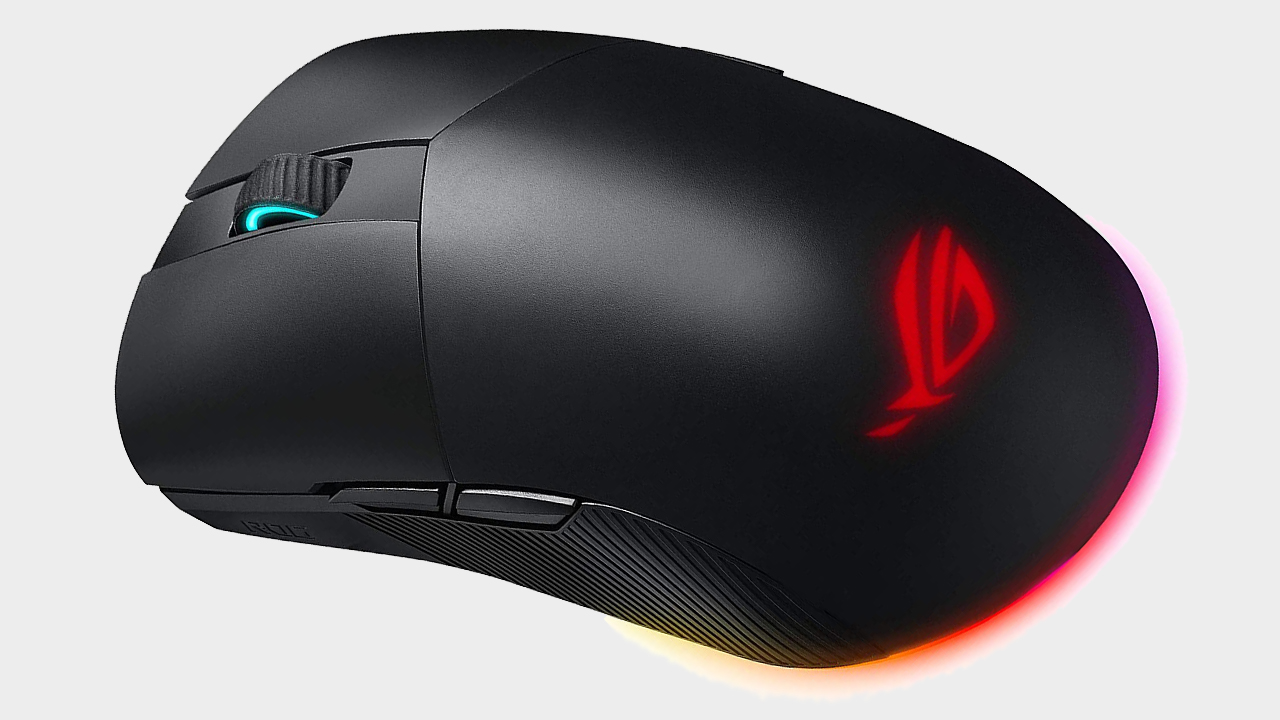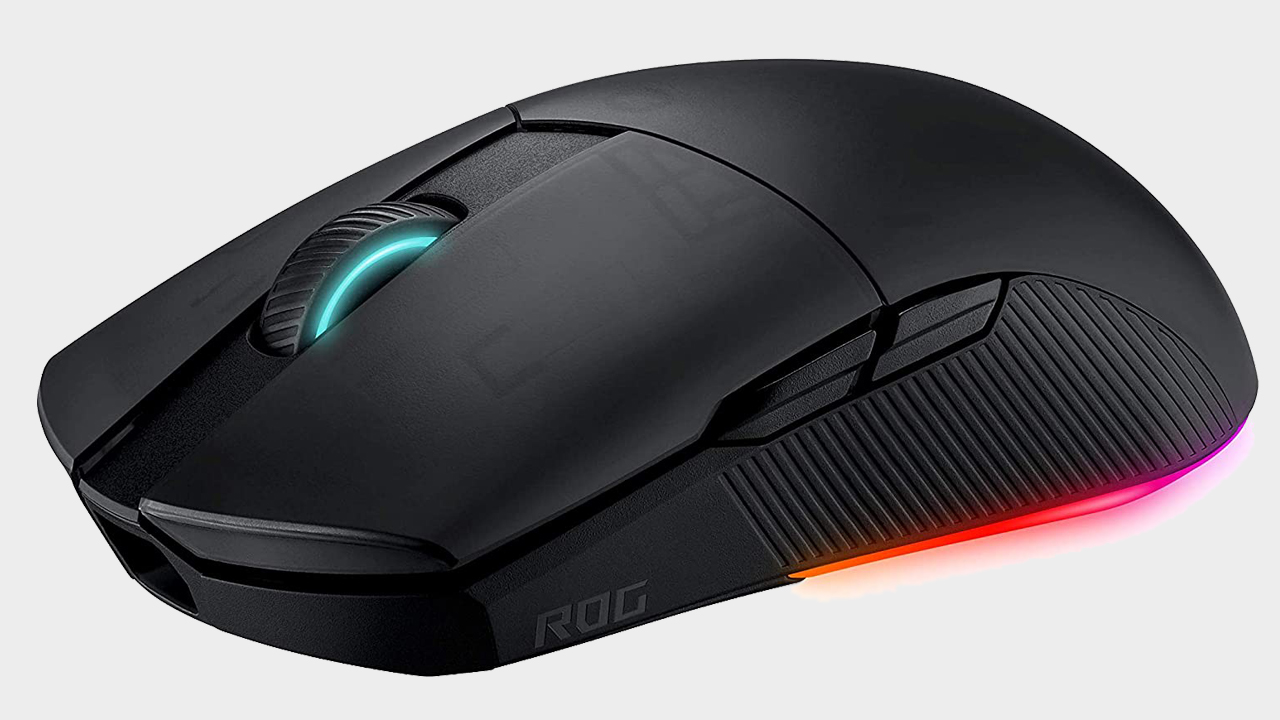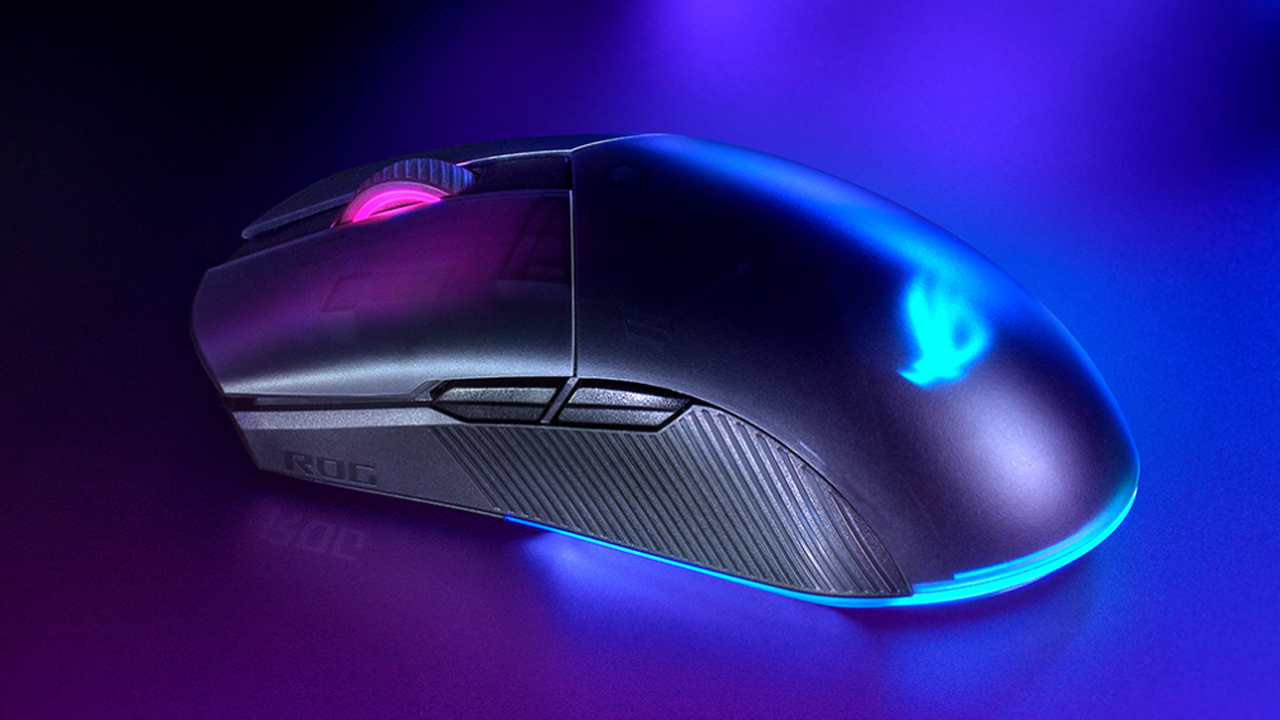GamesRadar+ Verdict
The logical next step for the Pugio line, this sequel blends customizability and connectivity for an excellent optical gaming mouse.
Pros
- +
Ambidextrous design
- +
Three connection modes
- +
Swappable button switches
Cons
- -
DPI button inaccessible during use
- -
Small side buttons
- -
Setup was a hassle
Why you can trust GamesRadar+
The Asus ROG Pugio II has a lot to live up to. The original ROG Pugio was a pretty solid optical gaming mouse, one of the few of its kind from big-name manufacturers due to a symmetrical design that made it as comfortable for left-handed folks as it was for ‘normal’ people. Ahem. This reviewer is, in fact, a leftie, and found the original Pugio a very well-designed mouse, albeit one without much in the way of additional features.
The Asus ROG Pugio II, on the other hand, has plenty; a revolutionized new edition that combines tri-mode wireless connectivity with a high-performance optical sensor to produce a mouse that feels great to use.
Features
The main selling point here is the tri-mode connectivity, which allows the mouse to be connected via Bluetooth, USB dongle, or wired connection. The former is a good choice - the wireless connection utilises an ultra-fast 2.4GHz link for minimum input latency.
Swapping between those modes is done via a switch on the base of the mouse, where Bluetooth pairing and DPI control buttons are located as well. And if you want to increase sensitivity? The mouse cycles between up to 5 DPI presets, with some further customisation available in the ROG Armory software (the inability to adjust sensitivity on-the-fly without turning over the mouse might prove frustrating for some gamers, though).

As for other features, the ROG Pugio II also hosts a battery with power-saving modes, pivoted button mechanisms, and swappable button switches, allowing you to adjust the feel of your clicks or repair a damaged switch as needed. However, be aware that the mouse does have to be taken apart to do this; it’s not designed to come apart without tools.
Design
As I mentioned, the ROG Pugio II has a symmetrical design allowing for ambidextrous use. It’s relatively comfortable and compact, sitting beneath the palm of the hand. I did miss the presence of a thumb rest, but that would’ve been practically impossible to implement on both sides of the mouse. The look of the mouse on the whole is relatively simplistic, then, with textured segments on both sides to improve grip.
The RGB lighting is good too, with a Republic of Gamers logo shining through the translucent grey plastic body and around the base. This can be fully customised through Asus’ ROG Armory software.
Meanwhile, the buttons feel sturdy and the scroll wheel has equally solid construction, with a textured rubberised rim. The two buttons on either side are a bit small, but can be deactivated as necessary depending on whether you’re using a left- or right-handed configuration. It’s effective, and was perfectly comfortable to use for hours in my left hand.
However, I was less impressed with charging. The mouse charges via USB-C, and the shaped port means you’re forced to use the included cable; a somewhat frustrating design choice.
Performance
The ROG Pugio II performs well, but I’d expect as much from an expensive mouse like this. The optical sensor has a sensitivity of up to 16,000 DPI, fairly standard for gaming mice these days, and it certainly feels good to use.

The 2.4GHz connection worked a charm as well, ensuring that there was no noticeable latency whatsoever in my tests (the 2.4GHz also benefits from an improved range). The wired and Bluetooth modes proved equally effective, although the Bluetooth would occasionally drop out every now and then.
My main beef with the Pugio II was how long the setup took. At first, the Bluetooth mode wouldn’t connect, so I swapped over to the 2.4GHz USB dongle. This worked fine, but installing and setting up the ROG Armory software took more than ten minutes and required a full system restart. That's far from ideal.
It doesn't negate what is otherwise a great little mouse, though - it's both responsive and comfortable, which is the most important thing.
Overall
The ROG Pugio II is perfectly competent, and certainly the best gaming mouse we've seen for a while when it comes to ambidextrous users. Its lightweight, symmetrical design places comfort and speed over control, which MMO and MOBA fans are likely to find disappointing. If you’re a leftie like me, though, it’s perfect.
This is also a decent choice for pairing with a gaming laptop, since it’s relatively compact and the USB dongle can be stored easily inside the body of the mouse. At this price it’s a tad on the expensive side, but the solid build quality means that this mouse will last you a while. Be sure to check out some of our favorite models in our guide to the best wireless gaming mouse.
Christian is a writer for Maximum PC, but also writes in a freelance capacity for a number of other sites including GamesRadar, PC Gamer, and TechRadar. He knows the PC gaming space inside out, particularly when it comes to hardware including PC builds, keyboards, and other peripherals.



